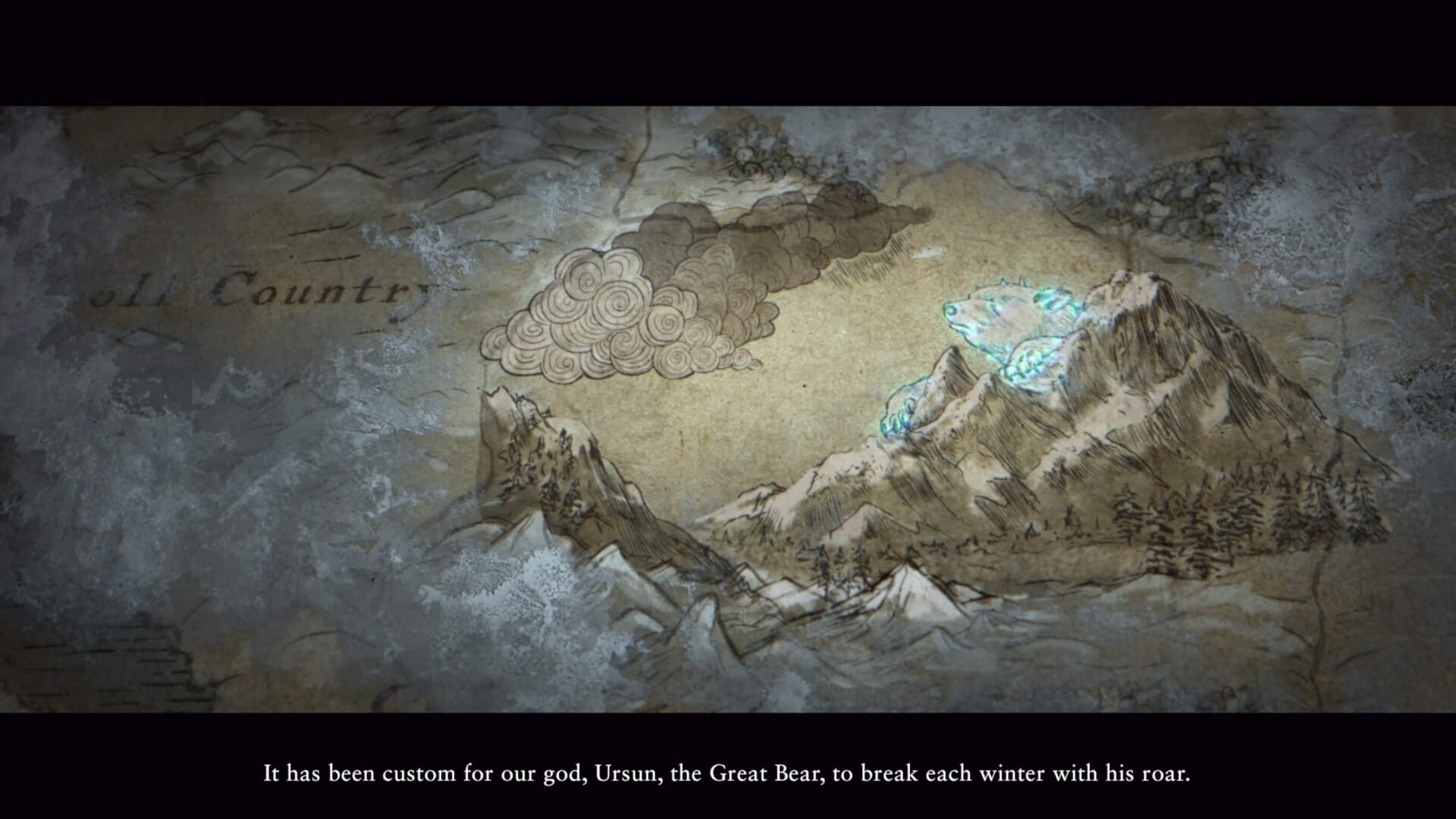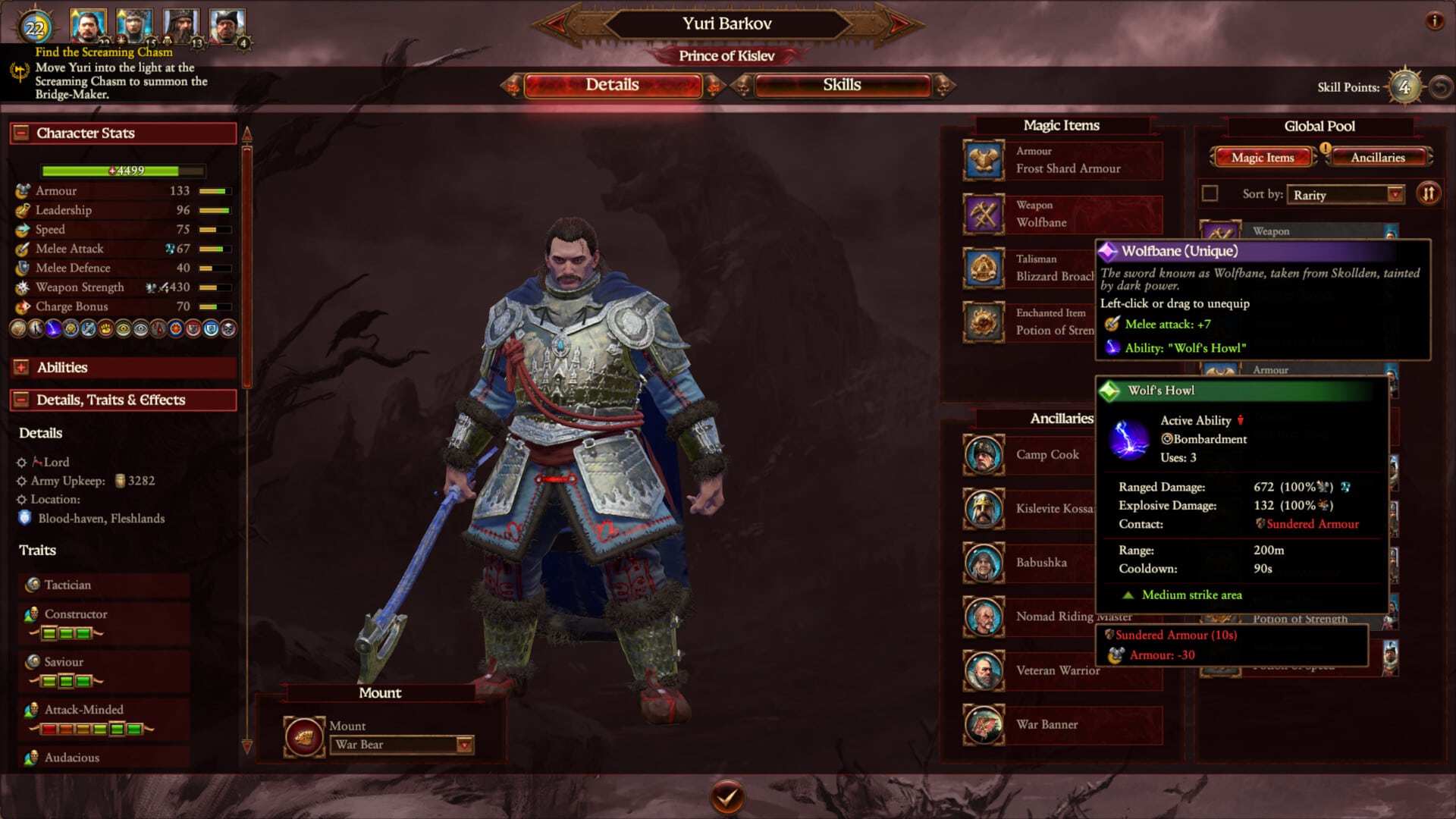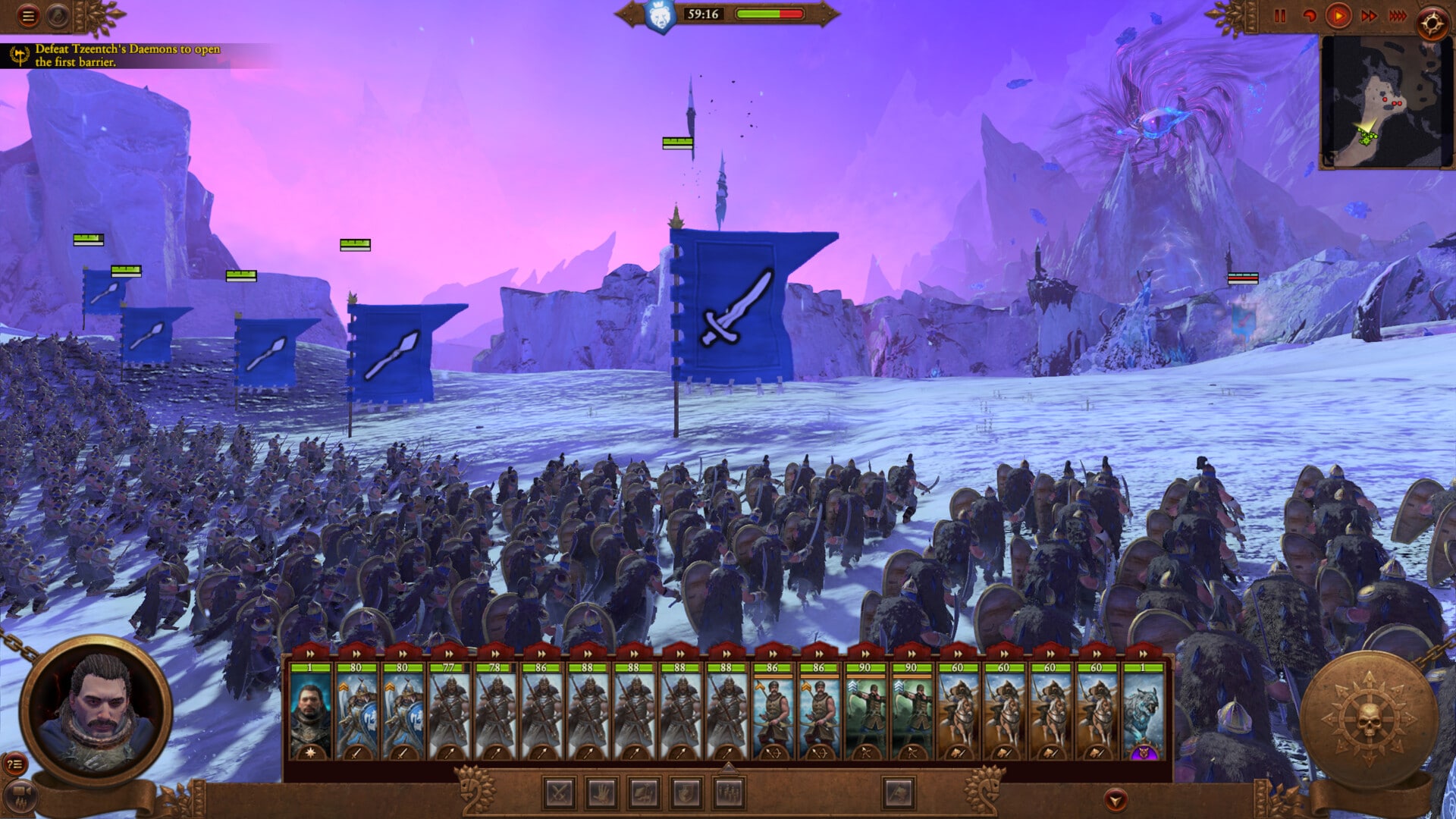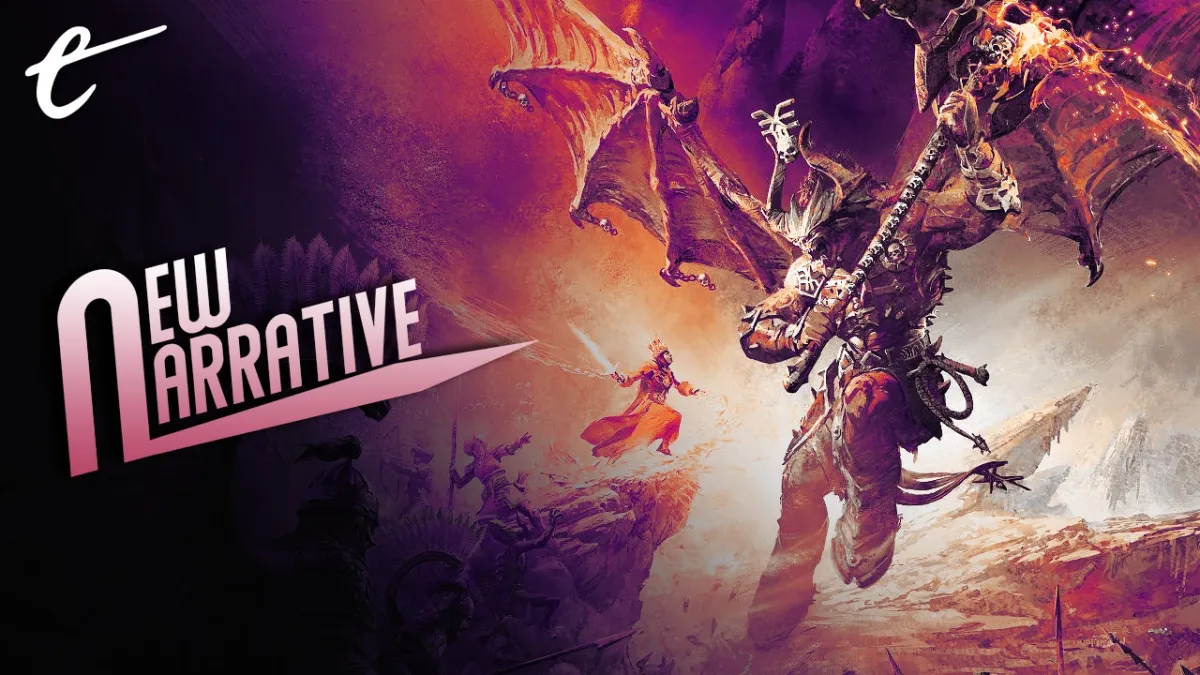This article contains spoilers for the prologue campaign in Total War: Warhammer III.
Whatever things I might have expected from Total War: Warhammer III, a gripping and well-told story wasn’t one of them. It’s not that Total War games have bad stories, but that grand strategy games aren’t known for crafted stories in the first place. Instead, their attraction lies in the multitude of systems that interact with one another to give rise to complex gameplay situations that enable the player to spin their own tales. This includes the time in Crusader Kings III when I arranged fatal accidents for three of my four children to minimize the succession crisis resulting from my imminent death, or the first Total War: Warhammer when a last-minute military alliance ensured I was supported in a siege I had no hope of breaking on my own.
Imagine my surprise then to find that the prologue to Total War: Warhammer III is a 6-8-hour campaign with a full-blown narrative. You take charge of Yuri Barkov, a lord in the Russian-inspired Kislevite faction, as he leads an expedition to find the faction’s lost bear god Ursun. Without Ursun, the Kislevites are doomed to an eternal winter, dwindling resources, and eventual extinction. It’s a grim premise that makes a suitably determined leader out of Yuri.
The difficult decisions Yuri faces and the frequent dissent voiced by his commanders initially mask that Chaos is gradually corrupting him. It can be difficult to tell the difference between hard-line decisiveness in the face of desperate conditions and the mark of madness. Eventually, however, Yuri insists on extreme choices, dismissing all conflicting opinions and generally raving about the sanctity of his mission and the justification it gives for his actions. His portrait, visible during battles in the customary Total War porthole at the bottom of the screen, turns to a pallid, red-eyed, and scarred complexion in an aesthetic reminiscent of Mass Effect 2’s Renegade choice system.

The story is nothing we haven’t seen before – Isildur’s corruption by the One Ring in the histories that precede The Lord of the Rings is an obvious inspiration, for example. However, it’s well paced and written, moving from subtle hints that things aren’t quite what they seem to aggressive, gravelly one-liners. The fact that this makes it obvious long before it’s explicitly revealed that Yuri is lost to Chaos, or that the commands he allegedly hears from Ursun come from a servant of Chaos, only strengthen the narrative. As satisfyingly camp as Yuri’s inane late-campaign shouting might be, there is tragedy in watching him succumb to evil even as you make choices on the campaign map that push Yuri further down this path.
These choices are supported by a light-touch RPG system. Yuri and later other lords and heroes recruited into your selected faction have skill trees to progress. These grant the traditional range of active and passive skills and bonuses, such as a leadership aura buff (which ensures units’ morale doesn’t break as easily) or a lower cost to army recruitment. It’s even possible to procure an armored bear to ride on, à la the panserbjørn in His Dark Materials.
Alongside skills, lords and heroes also have slots for armor, a weapon, a talisman, an enchanted item, and multiple slots for so-called ancillaries – a combination of banners and units that grant small bonuses such as greater marching speed or lower army upkeep. They represent a lord’s closest advisors and camp followers, which makes it difficult not to laugh at a line instructing you to “Left-click your Orthodoxy Pastor to equip them.” All the more so when the selections you make in this menu feel largely cosmetic.

Nonetheless, these light-touch RPG choices feed back into the story: Yuri discovers cursed and corrupting items during his expedition, which accelerate his decline. Some of these are visible in the items menu as a permanent reminder of his temptation.
Of course, this is still a Total War game, which means that the majority of the Warhammer III gameplay is split between two principal modes. On one hand, there is a 4X-style campaign map where you take turns to capture and upgrade settlements; recruit lords, heroes, and armies; engage in diplomacy and research; and choose your next targets, including sieges and special actions like assassinations or sabotage. On the other hand, once called to battle, the game switches to real-time micromanagement of battalions of hundreds of painstakingly designed units, using formations, terrain, spellcasting, and a mix of melee, ranged, mounted, airborne, and special troops to gain the advantage.
Total War can be overwhelming for newcomers or dilettantes like myself, who dip in and out of the series without a commitment to playing every installment. And given this is the third game in the Warhammer trilogy, I was expecting a rougher initial few hours than usual, particularly since five out of the eight currently available factions are Chaos – probably my least favorite factions in Warhammer. However, it’s actually hard to imagine a better-constructed tutorial than the prologue Kislevite campaign in Total War: Warhammer III.

Unlike with the torrent of information that greeted the player in the first couple of hours of Total War: Warhammer, the Kislevite campaign in Warhammer III is a careful drip feed of bite-size explanations taking no more than a few minutes each to work through. They are then immediately translated into gameplay to ensure the lessons are learned and retained through practice.
Whenever the tutorials might feel too slow or basic, as in the opening couple of hours when you are taught to control the camera and issue basic unit commands, the excellent story picks up the slack. And when the story eventually devolves into heavy metal pastiche – with goggle-eyed, tongue-lolling Chaos demons galloping between abysmal chasms and teeth-rimmed pits – the gameplay ramps up. Chaos hordes and waves of reinforcements arrive through unexpected portals dotted across a battle map, often flanking right behind your troops.
It’s here that I came to appreciate just how good the Total War: Warhammer III prologue campaign is at balancing story, gameplay, and tutorial. As the training wheels finally come off and you are left to manage half a dozen settlements, multiple armies with hundreds of units, and high-level hero characters, you realize that you’ve been gradually eased into the main campaign and invested into its storyline.






Published: Feb 23, 2022 11:00 am